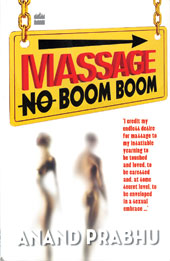A historical novel set in 1659, it’s a story of Idris, a jewelled-eye Somali trader, who is in Malabar to attend the Zamorin’s Mamangam festivities. A strange twist of fate brings Idris face to face with his nine-year-old son, Kandavar, born of a mysterious midnight tryst in this very land. Anxious to remain close to him for as long as possible, he joins the Nair household headed by Kandavar’s uncle, and is charged with a crucial task: of distracting the boy from his dream of becoming a Chaver, a warrior whose sole ambition is to assassinate the Zamorin, in a tradition whose beginnings have been lost in time. In an attempt to stave off the inevitable, Idris embarks with his son on a voyage that takes them from Malabar to Ceylon, and from Thoothukudi to the diamond mines of Golkonda, where he meets the queenly Thilothamma, as solitary a being as he is.
 Hiren Kumar Bose engages the author of Idris: Keeper of the Light, Anita Nair, on the making of the this fascinating novel and its sequels
Hiren Kumar Bose engages the author of Idris: Keeper of the Light, Anita Nair, on the making of the this fascinating novel and its sequels
You’ve been an essayist, poet, children’s writer, playwright, novelist and now a book (Idris: Keeper of the Light) which has already been snapped up four foreign language publishers and one in Malayalam. How does it feel?
As a writer who has spent several years working on a book, it is tremendously gratifying and satisfying to know that Idris will travel to various parts of the world.
Idris’ breadth is vast. The book is commingling of cultures as disparate as 17th century Malabar and Golconda, Arabic, Portuguese and Dutch. How did you go about researching and bringing this varied bouquet into your story?
The research involved was so time consuming and arduous that as I inched along, I worried if this novel would ever get written. There is hardly anything written about southern India and so I had to scrounge for every single detail be it lifestyle, names, weights & measures, geographical details etc. I tried to read up everything that was written about the realm in that period; looked for artworks that originated from South India again from that period; sought nuggets of information wherever I could find it be it a register or a folk tale, and eventually distilled it all to base my narrative upon.
How difficult was it bringing into life the fascinating insights into life in the 17th century India? And what were your reference points?
The story of Idris originated from a Kerala folk ballad about the last hours of Kandavar’s life. This was a man who went to battle thinking he would be victorious as his horoscope had said he would die at a later date. That was all I had to draw from. For the rest, I had to turn into a sleuth and find my way along. The most important lesson I learnt as I began looking at that period of Southern Indian history was that I had to unlearn everything I thought I knew. The foreign powers had just about started making serious inroads into India and the Indian way of life so we were still untouched by western beliefs and influences. So I drew up a chart of the period and went at it section by section trying to fact check every single detail I was going to include in my novel. In many ways, the writing of Idris was as much a voyage of discovery for me as it was for my characters.
Idris being a trilogy what can a reader expect in the sequels? Will Idris and his son Kandavar still be around?
Kandavar will certainly be part of vol 2 and 3. Of Idris, I am uncertain. The trilogy is ultimately a mapping of Kandavar’s life.
Do tell us about your favourite writers and their books?
I am a voracious reader and read everything except science fiction and fantasy so the list is long and uneven but generally what draws me to a book is the story telling rather than how lyrical the telling is. If a writer marries both, then I am his or her slave for the rest of my reading life.
An edited copy of the chat appeared in http://www.btw.co.in (February 2014 issue)








